With three hearts, blue blood, eight bendy arms and intelligence that outsmarts other spineless animals, there’s nothing quite like an octopus. Join us on a dive into their weird world…
Blue-ringed octopus
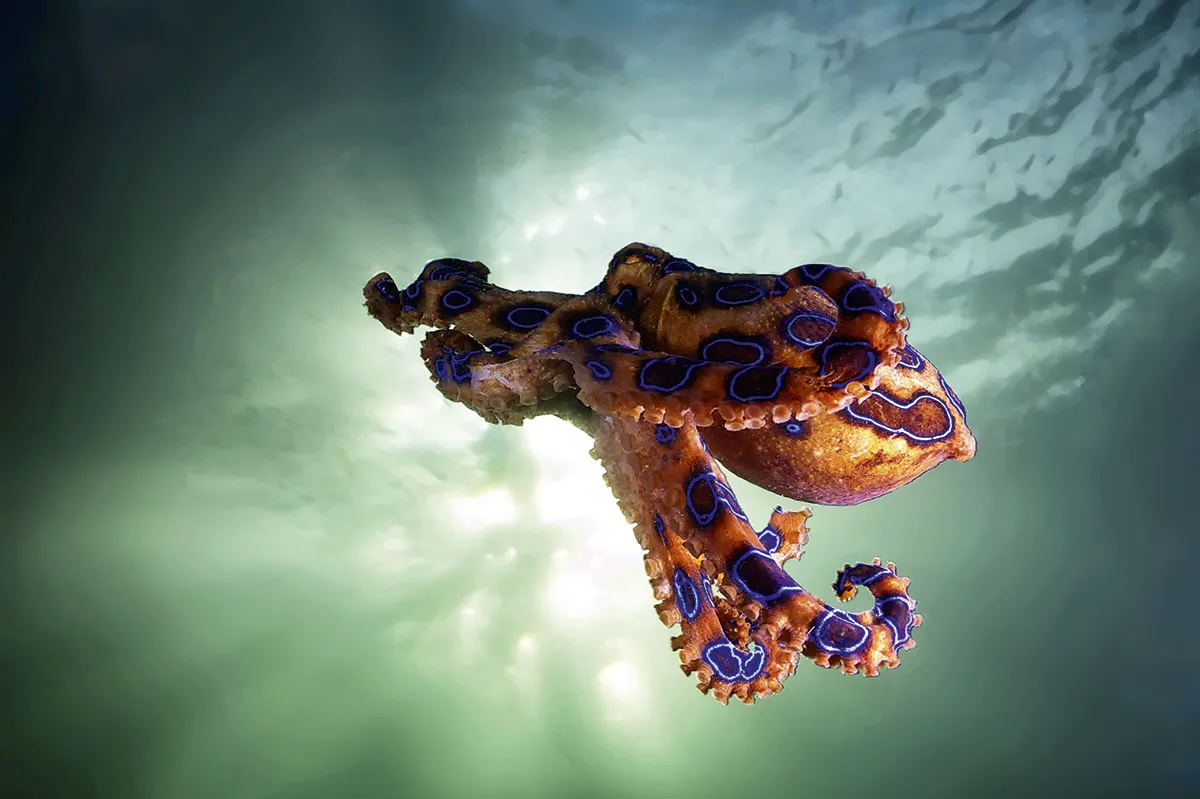
Famous for being some of the world’s deadliest animals, blue-ringed octopuses are usually quite docile and spend most of their time hiding in rubble and shells.
There are between 4 and 10 species in the Hapalochlaena genus, living in shallow seas from Australia to Japan. They are all less than a handspan in size, and each has around 60 bright blue rings which flash as a warning when the octopus feels threatened.
The rings contain multilayer reflectors, arranged to reflect blue-green light. The flashing is controlled by muscles that pinch in a surrounding layer of black pigmented chromatophore cells that cover the blue iridescence. When the muscles relax the blue iridescence is exposed. The warning flashes come before the octopus deploys its deadly defensive bite.
Bacteria living in their salivary glands make tetrodotoxin, TTX, the same toxin that makes pufferfish deadly to eat. Female blue-ringed octopuses cover their eggs in TTX to protect them from getting eaten.
Glass octopus
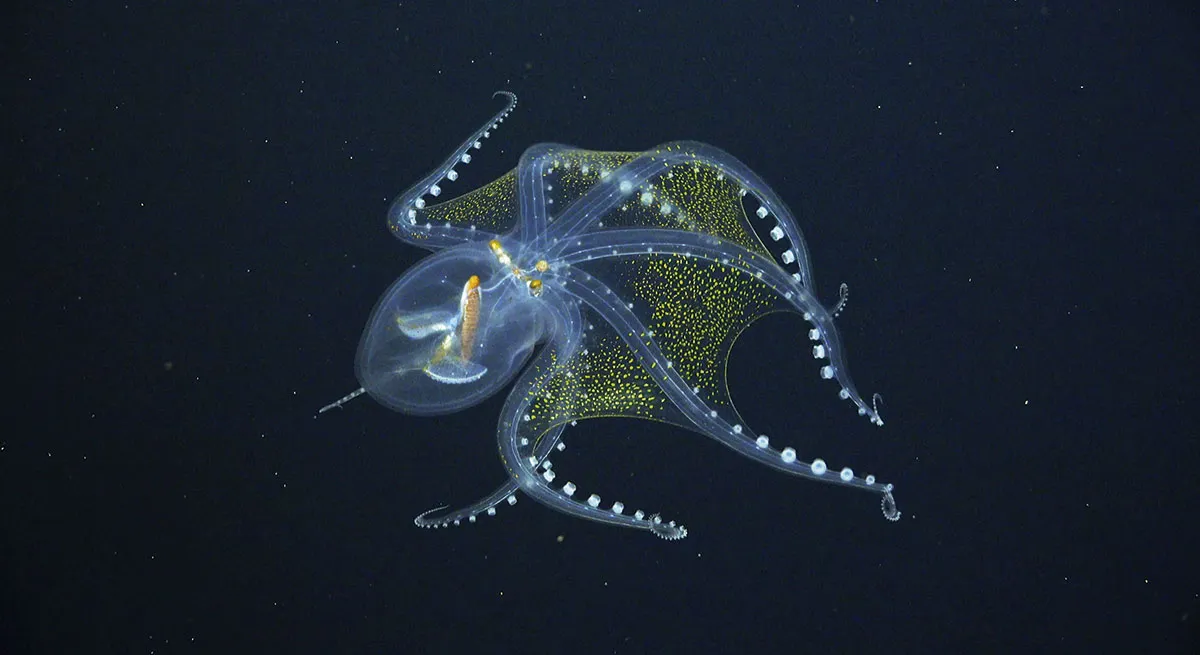
Living in mysterious deep waters down to at least 1,000 metres and with transparent gelatinous bodies, glass octopuses are some of the most elusive and least studied octopuses in the ocean. They’ve been spotted in tropical and subtropical waters all around the world, usually near giant underwater mountains called seamounts.
The one in this picture was found by scientists on the Schmidt Ocean Institute’s Research Vessel Falkor (named after the Luck Dragon from the 1980s movie The Neverending Story) during a 2021 expedition to the Phoenix archipelago in the Pacific. Exploring the deep sea with the remotely operated underwater vehicle, SuBastian, the team also found a second glass octopus. Footage of the two animals was a big hit on the internet.
Golden flecks visible on the webs between the octopus’s arms are pigmented chromatophores. Their function in dark waters is not obvious, and they may just be something the species inherited from ancestors. The only other non-transparent parts are the eyes, optic nerve and digestive tract.
Coconut octopus
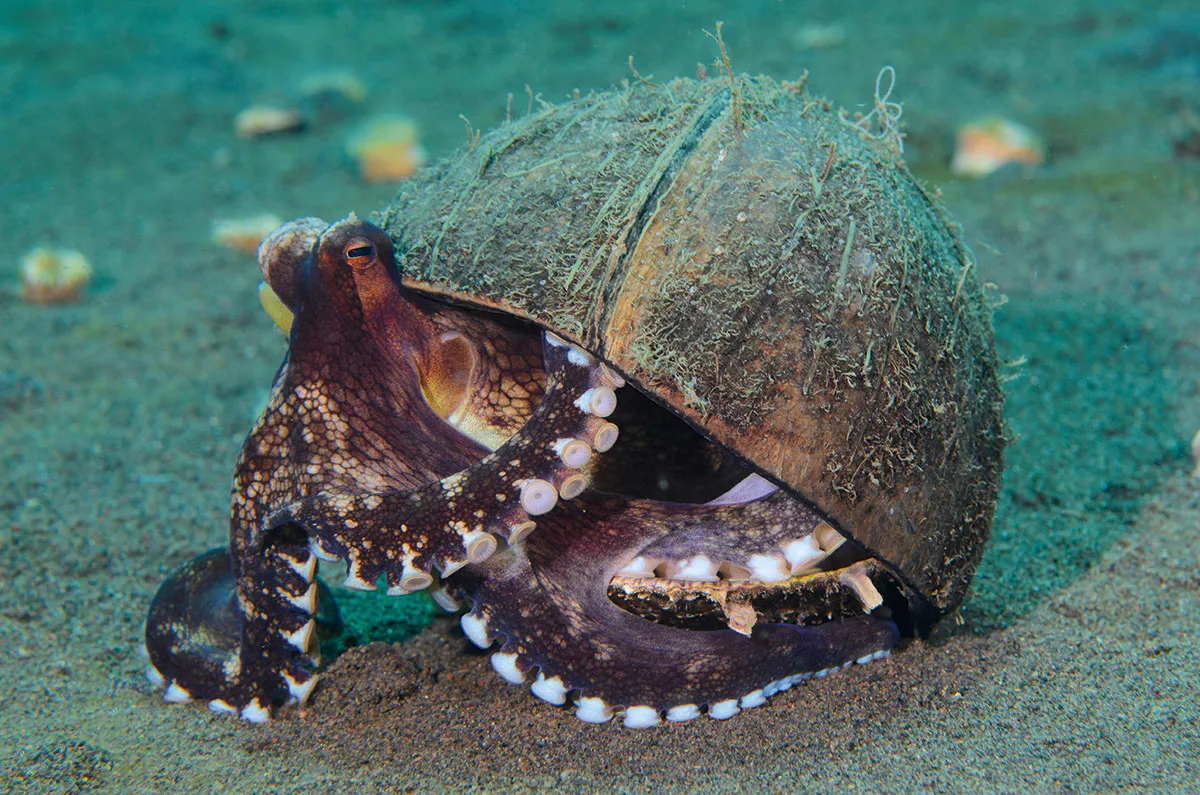
Working with tools is a well known sign of higher intelligence in animals, as ably demonstrated a few years ago by a video that went viral of an octopus strutting across the seabed carrying half an empty coconut shell. It found another shell, assembled the two halves and climbed inside its mobile, protective shelter.
Octopuses are doubtless some of the smartest invertebrates. They have around 500 million neurons, compared to 100,000 for a lobster and 18,000 for a sea slug. Roughly half of an octopus’s neurons are located in a doughnut-shaped cluster in their head and the rest are in their arms.
Does that mean an octopus’s arm can think for itself? Recent research showed their arms are under some central control from the brain. Scientists trained octopuses to reach the correct way along a Y-shaped pipe to grasp food at the end. The octopuses could repeat the trick successfully with arms they hadn’t used before, suggesting the brain must be involved.
Mimic octopus
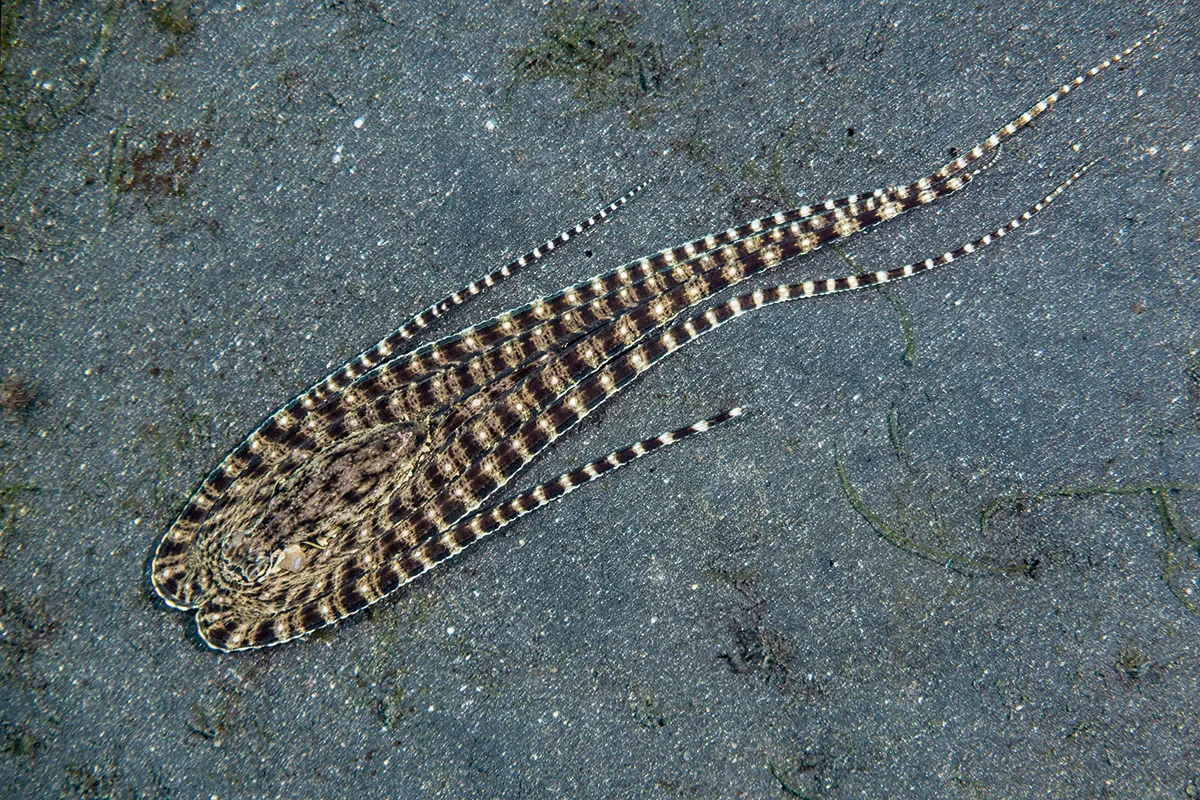
The mimic octopus is a true master of disguise. In Indonesia, they have been seen with their arms held together in a leaf shape and swimming across the sand with an undulating motion. This makes them look a lot like a local species of spiny, venomous flatfish, which presumably deceives predators into leaving the soft octopuses alone.
Not content with impersonating just one species, the mimic octopuses have a whole repertoire. They’ve been seen trailing their arms behind them, possibly mimicking a highly toxic lionfish.
A mimic octopus can also turn itself into a sea snake. It stuffs six arms into a hole in the seabed, then sticks out two arms with black and white stripes and waggles them around in a distinctly snaky way. They seem to deploy their versatile powers of deception in response to particular threats. For instance, when attacked by a shoal of territorial damselfish, an octopus was seen putting on its snake ‘costume’ and the fish left it alone. Sea snakes are common predators of damselfishes.
Dumbo octopus
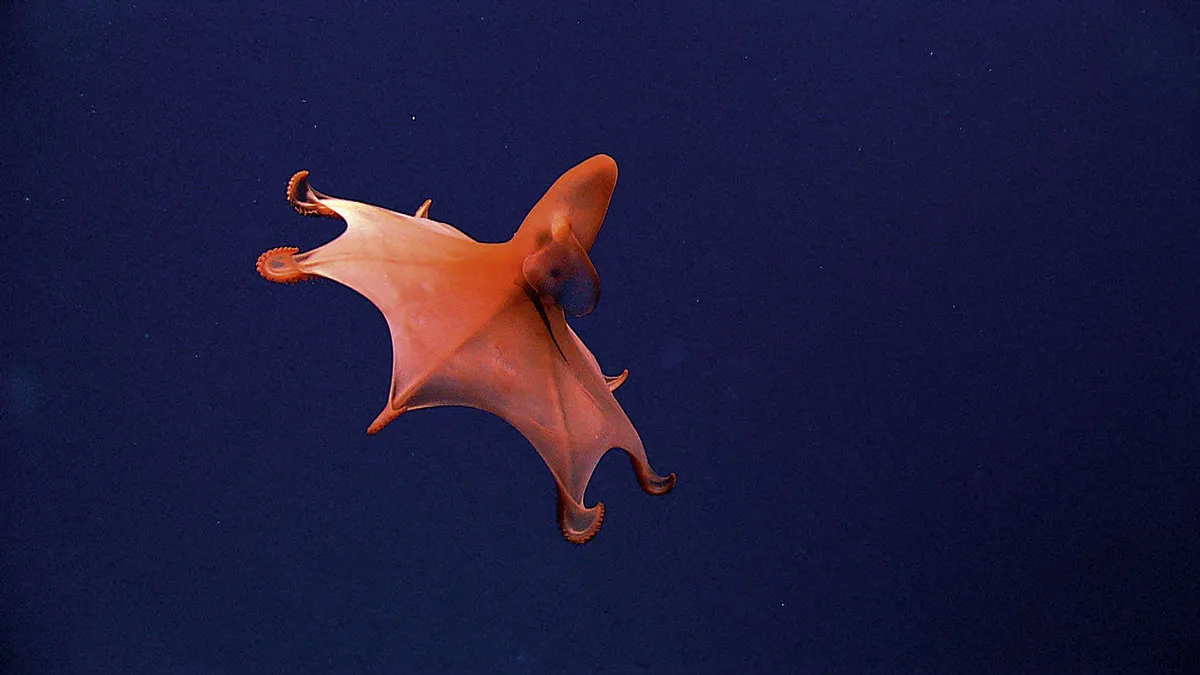
Also known as umbrella octopuses, more than a dozen known species of dumbo octopuses all share the same adorable and unusual feature: a pair of flapping, ear-like fins just above their eyes, which they use to swim and steer through underwater currents. They were named after Disney’s flying elephant, and most species live near the seabed, alternating between sitting and swimming.
Dumbos are the deepest-dwelling octopuses, all of them with ranges below 1,000 metres. In 2020, one was filmed at just shy of 7,000 metres inside the Java Trench in the Indian Ocean, extending the known maximum depth for octopuses by almost 2,000 metres.
The latest species to be found was collected in a trawl net near the Emperor seamount chain in the Pacific Ocean. The specimen was in amazingly good condition, despite being dragged up thousands of metres. CT and MRI scans showed it had features distinct from all the known species. Scientists named it the Emperor Dumbo.
Argonaut octopus
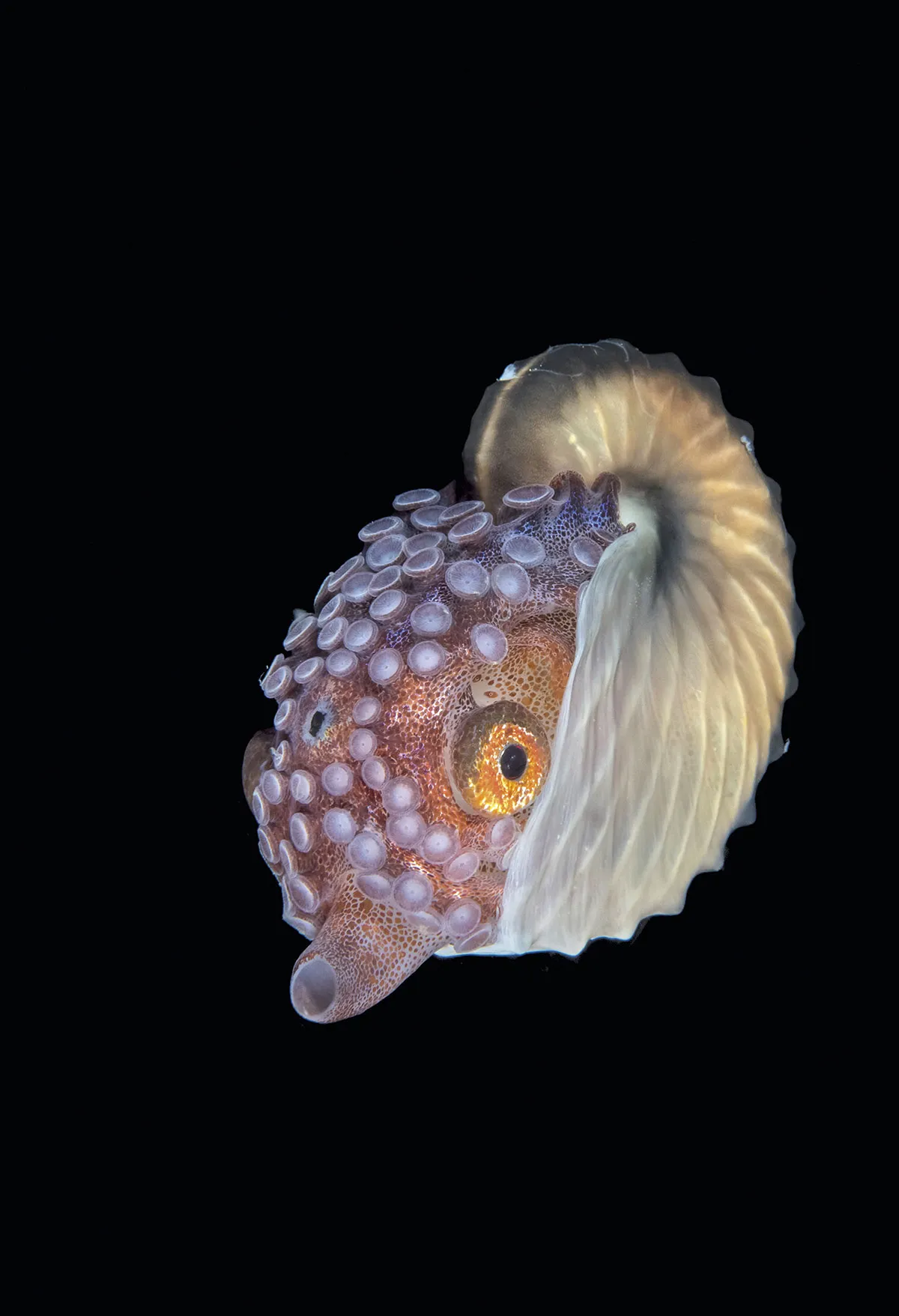
Argonauts are the only octopuses that make external shells. All the others gave up this ability in the distant evolutionary past, leaving the shell-making to snails, clams and their other molluscan relatives. There are seven known species of these curious little octopuses that occasionally wash up on beaches nestled inside a paper-thin shell (they are also known as paper nautiluses because they vaguely resemble another mollusc, the chambered nautilus).
Victorian scientists puzzled over argonauts. Some thought they weren’t shell-makers but piratical rascals that attacked other animals, ate them and made off in their empty shells, floating on the sea and holding two arms in the air to catch the breeze.
The truth was revealed in the 1840s by the French marine biologist, Jeanne Villepreux-Power, who discovered argonauts secrete shells from silvery webs on the ends of two arms. She also saw that only females make shells, using them as egg chambers in order to carry their unhatched young with them as they swim through open seas.
Giant Pacific octopus
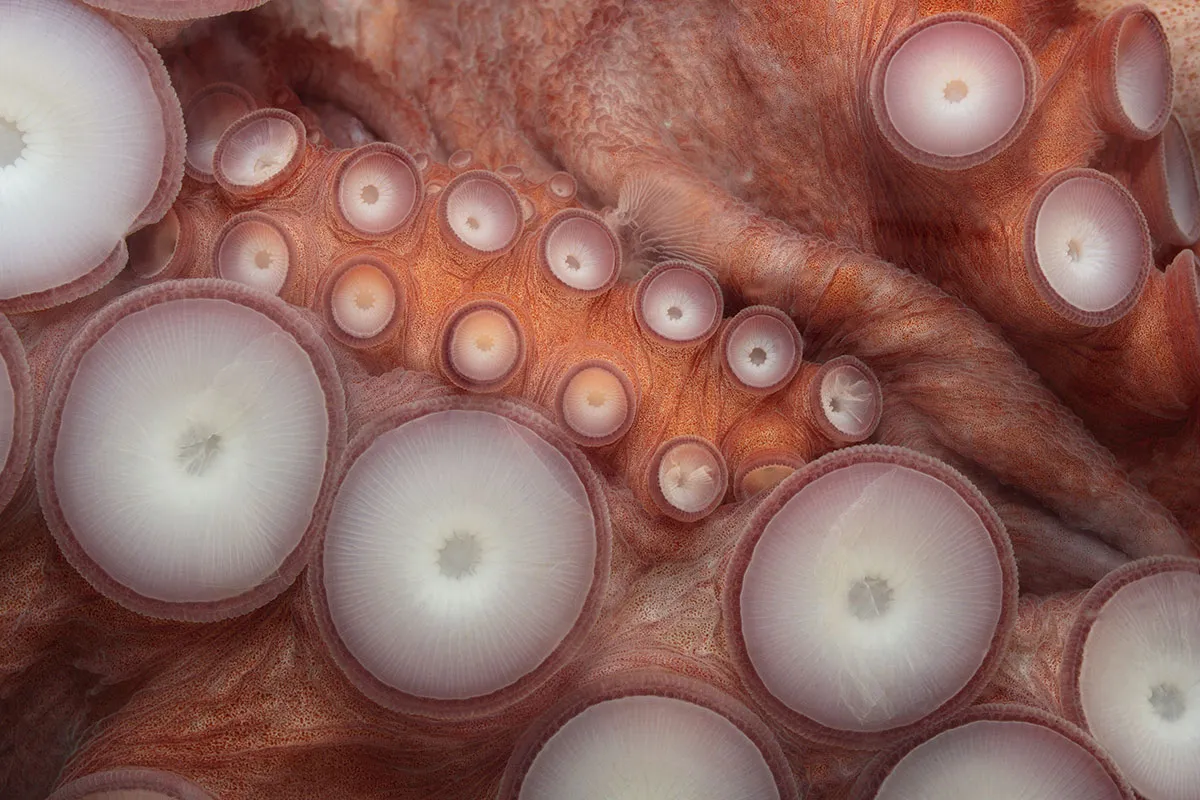
Of roughly 300 species of octopuses that inhabit seas worldwide, the giant Pacific octopus is one of the largest. Their arms can span as much as six metres and they’re covered in suckers as large as six centimetres in diameter, equipped with receptors that allow them to taste things they touch.
We’re learning more all the time about the complex lives of octopuses, from rare colonies of many octopuses living together (they’re normally solitary and quite hostile towards each other) to the females that throw shells and mud at males that are harassing them.
Scientists recently discovered sleeping octopuses change the colour and texture of their skin – quite possibly while they’re dreaming. Great mysteries remain, including how octopuses came to be such brainy molluscs with far more sophisticated nervous systems than their close relatives, the clams, oysters, slugs and snails.
Blanket octopus
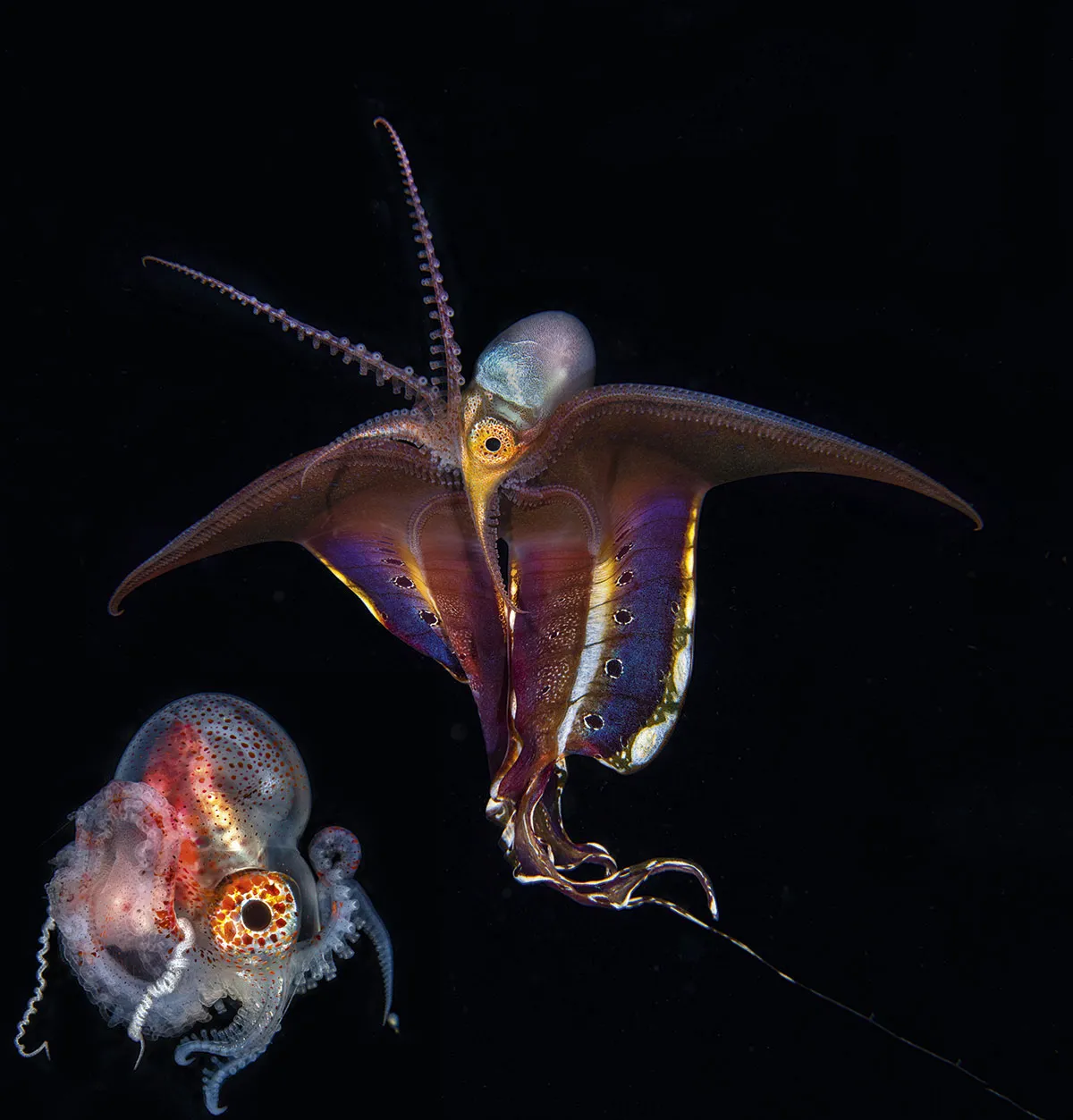
Fluttering membranes decorated with ‘peacock eyes’ help to make this female blanket octopus look bigger, presumably deterring predators. She can also defend herself by ripping the tentacles off a Portuguese man o’ war and waving them around; somehow she is immune to the stings.
Female blanket octopuses grow up to two metres long. And at around 2.4cm, the smaller male in this picture is not to scale. Females can be 40,000 times heavier than the males, which is the biggest size difference between the sexes of any animals.
The male’s large eye may help him locate a mate. When he does, he only needs to come briefly into contact with her. He amputates his specialised sperm-bearing arm, the hectocotylus, and gives it to the female. It’s likely the male then dies, because none have ever been found with a regenerated arm. A female can store multiple dismembered arms inside her body and uses them to fertilise her eggs, which she carries until they hatch.
- This article first appeared inissue 370ofBBC Science Focus Magazine–find out how to subscribe here
Read more about octopuses: